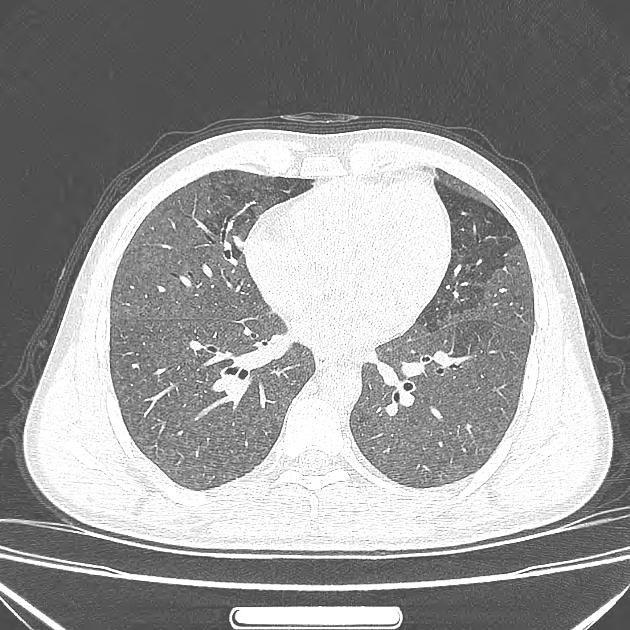Cellular non-specific interstitial pneumonia is one of the two histological subtypes of non-specific interstitial pneumonia (NSIP). It is less common compared with fibrotic NSIP but carries a much better prognosis.
On this page:
Clinical presentation
Symptoms are non-specific and include insidious onset of dyspnea and dry cough with restrictive pattern of decreased lung function and reduced gas exchange capacity.
Pathology
This pattern manifests as mild to moderate chronic interstitial inflammation and type II pneumocyte hyperplasia, with preservation of the lung architecture.
Absence of hyaline membranes and other findings of acute lung injury, granulomas, organisms or viral inclusions, dominant airways disease, eosinophils, dense interstitial fibrosis, diffuse severe alveolar septal inflammation, and organizing pneumonia involving <20% of the biopsy specimen are considered important negative findings helping to distinguish NSIP from other interstitial lung diseases.
Radiographic features
Plain radiograph
Chest radiographs can be normal in the early stages. There may be ill-defined or ground-glass opacities with lower lobe distribution or consolidation in a patchy, reticulonodular or mixed pattern.
CT
Imaging features can overlap between cellular and fibrotic types, as well as usual interstitial pneumonia (UIP), in as many as 30% of patients. Also, temporal changes in the pattern of HRCT findings in subsequent studies are shown in up to 28% of cases, which result in changes in the provisional diagnosis from NSIP to UIP.
Involvement tends to be subpleural and generally symmetrical with an apicobasal gradient. Solely or predominantly upper lobe involvement or purely unilateral disease makes the diagnosis of NSIP less likely.
Common manifestations include:
- ground-glass opacities
- tends to be a dominant feature: can be symmetrically or diffusely distributed in all zones or display a basal predominance
- immediate subpleural sparing: relatively specific sign
- fine reticular opacities
Following imaging features are more common in fibrotic type:
- thickening of bronchovascular bundles
- traction bronchiectasis: associated with fibrotic NSIP
- lung volume loss: particularly lower lobes
Treatment and prognosis
Cellular type usually responds very well to corticosteroids with ~100% 10-year survival.
Differential diagnosis
-
hypersensitivity pneumonitis
- cellular NSIP can be indistinguishable from
- acute/inflammatory type of hypersensitivity pneumonitis or
- non fibrotic hypersensitivity pneumonitis
- cellular NSIP can be indistinguishable from





 Unable to process the form. Check for errors and try again.
Unable to process the form. Check for errors and try again.